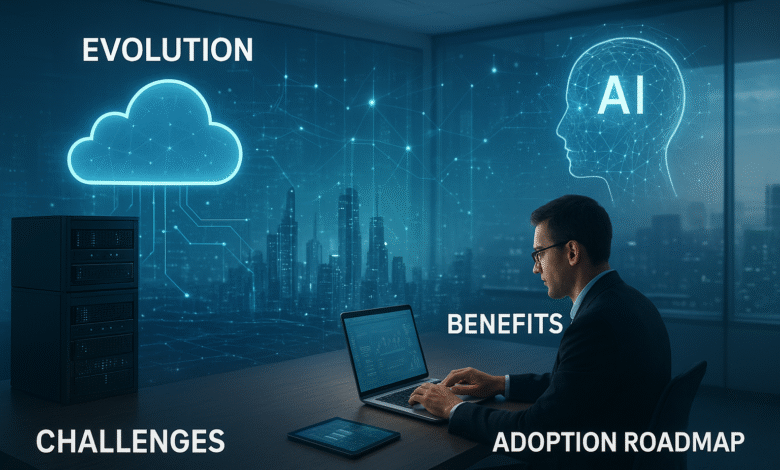Business Computing World: A Complete Guide to Modern Business Technology

Introduction
In today’s digital-first environment, companies can no longer rely on outdated business practices to stay relevant. The Business Computing World has become a vital ecosystem where technology, automation, cloud platforms, and artificial intelligence intersect to transform how organizations function.
From data-driven decision-making to advanced cybersecurity, this technological framework supports businesses in scaling faster, streamlining operations, and creating innovative solutions. For entrepreneurs, IT professionals, and decision-makers, understanding the Business Computing World is essential for thriving in an increasingly competitive economy.
The Evolution of Business Computing
The journey of business computing began with simple mainframes designed for tasks such as payroll and bookkeeping. Over the years, this field has expanded to cover advanced systems like enterprise resource planning (ERP), customer relationship management (CRM), artificial intelligence, and the Internet of Things (IoT).
Today, technology is not merely a supportive tool but the driving force behind corporate innovation. Giants like Amazon and Netflix have shown how computing power can be used to scale globally, deliver personalized experiences, and optimize complex business operations. The Business Computing World demonstrates how far we have come from spreadsheets to predictive analytics and smart automation.
Core Components of the Business Computing World
The modern Business Computing World relies on several key building blocks that shape today’s enterprises:
1. Cloud Computing
Organizations increasingly depend on cloud services such as SaaS, PaaS, and IaaS. Platforms like AWS, Microsoft Azure, and Google Cloud make scaling efficient and cost-effective.
2. Cybersecurity
With growing data breaches and cyberattacks, strong security measures—like encryption, firewalls, and advanced monitoring—are essential for protecting digital assets.
3. Big Data and Analytics
Business leaders use tools such as Power BI, Tableau, and Hadoop to analyze massive amounts of data and turn it into actionable insights.
4. Automation and AI
Chatbots, predictive analytics, and machine learning help automate repetitive processes while improving customer service and strategic planning.
5. Enterprise Applications
ERP, HRM, and CRM software streamline internal processes, making collaboration more effective and boosting overall productivity.
Benefits of Business Computing in Organizations
Adopting practices from the Business Computing World provides organizations with several advantages:
-
Higher Efficiency & Productivity: Automation reduces manual errors and saves valuable time.
-
Scalability: Cloud platforms allow businesses to expand without massive infrastructure investments.
-
Improved Collaboration: Remote teams thrive using collaboration tools like Zoom, Microsoft Teams, and Slack.
-
Stronger Security: Enhanced cybersecurity solutions protect sensitive business data from threats.
-
Innovation: Emerging technologies drive new business models, products, and customer experiences.
Step-by-Step Guide to Leveraging Business Computing
Companies can embrace the Business Computing World effectively by following a structured roadmap:
Step 1: Assess Business Needs
Identify areas that need improvement, such as slow reporting systems, inefficiencies, or customer engagement challenges.
Step 2: Choose Suitable Tools
-
For communication: Slack, Teams, or Zoom
-
For project management: Trello, Asana, or Jira
-
For data insights: Tableau, Power BI, or Google Analytics
Step 3: Adopt Cloud Solutions
Start migrating core functions to platforms like AWS or Azure. For cautious adopters, hybrid models are a safe entry point.
Step 4: Strengthen Cybersecurity
Apply multi-factor authentication, educate employees on cyber hygiene, and update security protocols regularly.
Step 5: Monitor and Scale
Use analytics to track progress, then scale operations gradually as business demand grows.
Challenges in the Business Computing World
While the advantages are compelling, businesses also face notable hurdles:
-
High Implementation Costs: Modern systems can require large initial investments.
-
Data Security Risks: Cybercriminals are becoming more sophisticated.
-
Skill Gaps: Employees may lack the knowledge to maximize advanced technologies.
-
Resistance to Change: Shifting away from traditional processes often meets internal pushback.
Organizations must not only invest in technology but also provide proper training and adopt change management strategies to overcome these obstacles.
Conclusion
The Business Computing World is the foundation of modern enterprise success. By leveraging cloud platforms, analytics, cybersecurity, and automation, organizations can streamline operations, boost productivity, and create innovative growth opportunities.
For leaders, keeping pace with this fast-changing environment is no longer optional—it is essential for long-term competitiveness. By assessing needs, choosing the right tools, and strengthening digital infrastructure, businesses can unlock the full potential of technology in today’s digital economy.
Frequently Asked Questions (FAQs)
1. What does the Business Computing World include?
It covers the complete ecosystem of digital tools such as cloud computing, AI, cybersecurity, data analytics, and enterprise applications that support business growth.
2. Why is the Business Computing World essential for modern companies?
It helps improve efficiency, enables smarter decisions, strengthens security, and allows businesses to compete effectively in a digital-first market.
3. What are the main challenges of adopting business computing?
The biggest hurdles include high implementation costs, security threats, skill shortages, and organizational resistance to adopting new systems.
4. How can small businesses benefit from business computing?
Small businesses can use affordable cloud services, automation software, and data tools to reduce costs, scale operations, and compete with larger companies.
5. What trends will shape the future of the Business Computing World?
Trends such as AI-driven automation, blockchain adoption, edge computing, and hybrid work models will dominate in the coming years.
Read also:Timewarp TaskUs: Boosting Productivity with Smart Task Management



